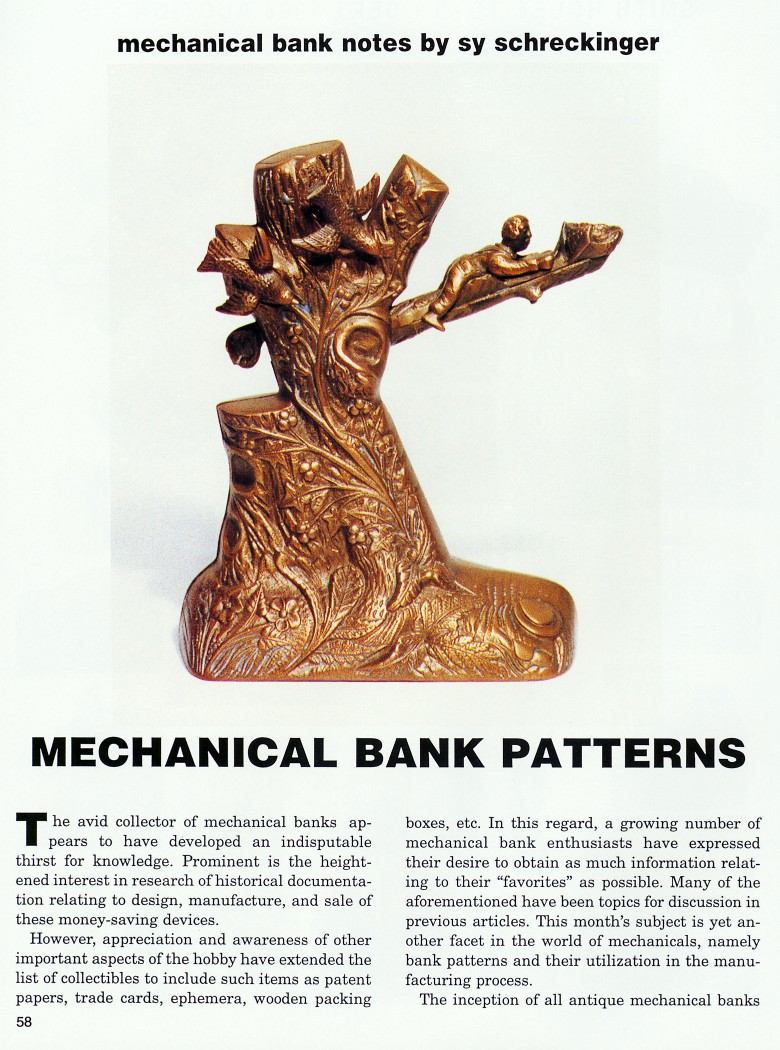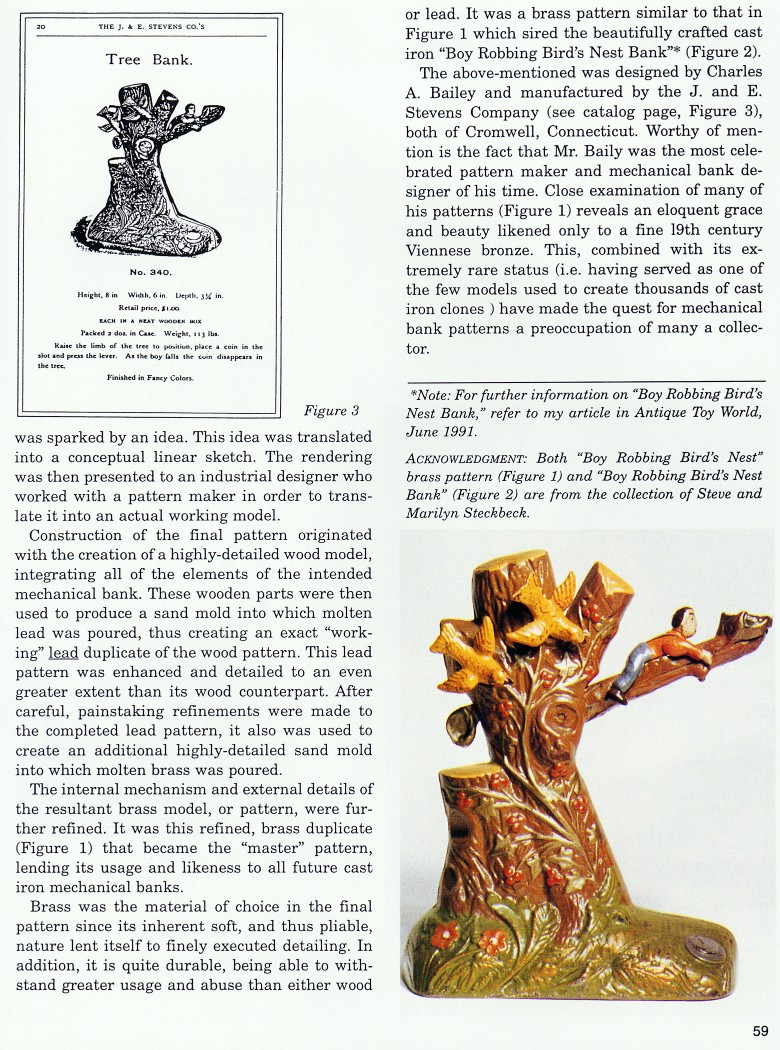|
Mechanical Bank Patterns
by Sy Schreckinger – ANTIQUE TOY WORLD Magazine – August, 1998
The avid collector of mechanical banks appears
to have developed an indisputable thirst for knowledge. Prominent is the
heightened interest in research of historical documentation relating to
design, manufacture, and sale of these money-saving devices.
However, appreciation and awareness of other important aspects of the
hobby have extended the list of collectibles to include such items as
patent papers, trade cards, ephemera, wooden packing boxes, etc. In this
regard, a growing number of mechanical bank enthusiasts have expressed
their desire to obtain as much information relating to their "favorites"
as possible. Many of the aforementioned have been topics for discussion in
previous articles. This month's subject is yet another facet in the world
of mechanicals, namely bank patterns and their utilization in the
manufacturing process.
The inception of all antique mechanical banks was sparked by an idea.
This idea was translated into a conceptual linear sketch. The rendering
was then presented to an industrial designer who worked with a pattern
maker in order to translate it into an actual working model.
Construction of the final pattern originated with the creation of a
highly-detailed wood model, integrating all of the elements of the
intended mechanical bank. These wooden parts were then used to produce a
sand mold into which molten lead was poured, thus creating an exact
"working" lead duplicate of the wood pattern. This lead pattern was
enhanced and detailed to an even greater extent than its wood counterpart.
After careful, painstaking refinements were made to the completed lead
pattern, it also was used to create an additional highly-detailed sand
mold into which molten brass was poured.
The internal mechanism and external details of the resultant brass
model, or pattern, were further refined. It was this refined, brass
duplicate (Figure 1) that became the "master" pattern, lending its usage
and likeness to all future cast iron mechanical banks.
Brass was the material of choice in the final pattern since its
inherent soft, and thus pliable, nature lent itself to finely executed
detailing. In addition, it is quite durable, being able to withstand
greater usage and abuse than either wood or lead. It was a brass pattern
similar to that in Figure 1 which sired the beautifully crafted cast iron
"Boy Robbing Bird's Nest Bank"* (Figure 2).
The above-mentioned was designed by Charles A. Bailey and
manufactured by the J. and E. Stevens Company (see catalog page, Figure
3), both of Cromwell, Connecticut. Worthy of mention is the fact that Mr.
Bailey was the most celebrated pattern maker and mechanical bank designer
of his time. Close examination of many of his patterns (Figure 1) reveals
an eloquent grace and beauty likened only to a fine 19th century Viennese
bronze. This, combined with its extremely rare status (i.e. having served
as one of the few models used to create thousands of cast iron clones )
have made the quest for mechanical bank patterns a preoccupation of many a
collector.
*Note: For further information on "Boy Robbing Bird's Nest Bank,"
refer to my article in Antique Toy World,
June 1991.
ACKNOWLEDGMENT: Both "Boy Robbing Bird's Nest" brass pattern (Figure
1) and "Boy Robbing Bird's Nest Bank" (Figure 2) are from the collection
of Steve and Marilyn Steckbeck.
|


